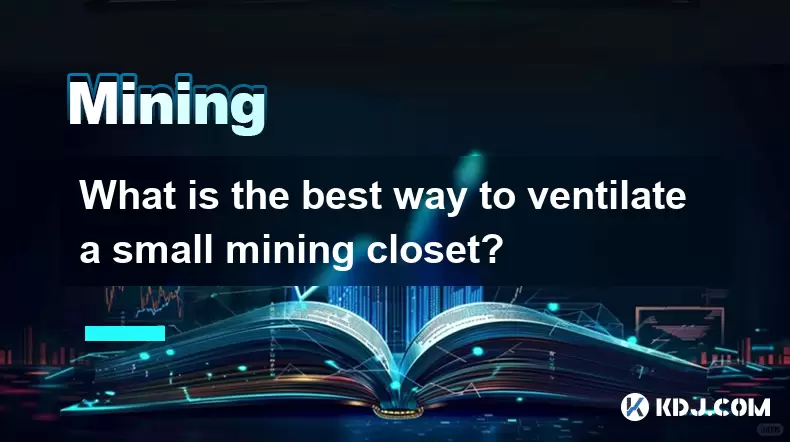-
 Bitcoin
Bitcoin $120400
1.77% -
 Ethereum
Ethereum $3615
7.90% -
 XRP
XRP $3.580
17.84% -
 Tether USDt
Tether USDt $1.001
0.06% -
 BNB
BNB $729.4
1.25% -
 Solana
Solana $179.9
5.04% -
 USDC
USDC $0.0000
0.01% -
 Dogecoin
Dogecoin $0.2311
8.22% -
 TRON
TRON $0.3226
4.04% -
 Cardano
Cardano $0.8490
12.85% -
 Hyperliquid
Hyperliquid $46.45
0.72% -
 Stellar
Stellar $0.4913
8.54% -
 Sui
Sui $4.027
2.00% -
 Chainlink
Chainlink $18.51
11.67% -
 Hedera
Hedera $0.2818
21.51% -
 Avalanche
Avalanche $24.03
7.40% -
 Bitcoin Cash
Bitcoin Cash $508.5
2.90% -
 Shiba Inu
Shiba Inu $0.00001496
3.24% -
 UNUS SED LEO
UNUS SED LEO $8.961
1.83% -
 Toncoin
Toncoin $3.264
3.13% -
 Litecoin
Litecoin $104.6
8.15% -
 Polkadot
Polkadot $4.389
6.11% -
 Uniswap
Uniswap $9.924
10.63% -
 Monero
Monero $337.9
0.49% -
 Pepe
Pepe $0.00001376
2.79% -
 Bitget Token
Bitget Token $4.830
2.46% -
 Ethena USDe
Ethena USDe $1.001
0.05% -
 Dai
Dai $1.000
0.02% -
 Aave
Aave $325.2
1.66% -
 Bittensor
Bittensor $423.7
-0.85%
What is the best way to ventilate a small mining closet?
Proper ventilation in a mining closet prevents overheating, extends hardware lifespan, and maintains efficient cryptocurrency mining operations.
Jul 13, 2025 at 10:14 pm

Understanding the Importance of Ventilation in a Mining Closet
Ventilating a small mining closet is crucial for maintaining optimal operating temperatures for your cryptocurrency mining hardware. Overheating can significantly reduce the lifespan of GPUs and ASIC miners, leading to reduced efficiency and potential hardware failure. Proper airflow ensures that hot air is expelled efficiently while cool air is drawn in, preventing heat buildup within the confined space.
Mining rigs generate substantial amounts of heat due to continuous operation at high performance levels. Without proper ventilation, this heat accumulates rapidly in a small room or closet, which can cause thermal throttling — a process where the hardware reduces its performance to protect itself from overheating.
Choosing the Right Fans for Your Mining Closet
Selecting the appropriate fans plays a pivotal role in ensuring effective ventilation. Inline duct fans are highly recommended for exhausting hot air from a mining closet, especially when paired with intake fans to maintain a balanced airflow system. These fans can be mounted on the ceiling or walls and connected to ducts that channel hot air outside the building or into a larger room.
- Exhaust fans should be installed near the top of the closet since hot air rises.
- Intake fans should be placed lower to allow cooler air to enter from outside or adjacent spaces.
- Oscillating fans inside the closet can help circulate air around the mining equipment, preventing localized heat pockets.
Make sure the fan CFM (cubic feet per minute) rating matches the volume of your closet to ensure efficient air exchange without creating excessive noise or pressure imbalance.
Optimizing Airflow Through Strategic Equipment Placement
How you position your mining equipment within the closet directly affects how well the ventilation works. Keeping devices spaced apart allows for better air circulation around each unit, reducing the risk of heat retention. Avoid stacking miners or placing them too close to walls or other obstructions.
- Place mining rigs so their exhaust vents face the exhaust fan for direct removal of hot air.
- Ensure cables and power supplies don’t block airflow paths inside the closet.
- Use shelves or racks designed for mining setups to keep equipment organized and elevated off the floor.
This strategic placement not only improves cooling efficiency but also makes maintenance and troubleshooting easier over time.
Using Insulation and Temperature Monitoring Tools
Insulating your mining closet might seem counterintuitive, but it helps in managing internal temperatures more effectively. Proper insulation prevents external heat from entering the closet during warmer periods, and retains cooled air during colder seasons if using an air conditioning system.
- Consider using foam or rubber insulation around exhaust ducts to prevent heat leakage into the room.
- Install a temperature monitoring device such as a smart thermostat or a dedicated mining rig temperature sensor to track internal conditions in real-time.
- Some advanced setups integrate with smart home systems to automatically adjust fan speeds or alert users when temperatures exceed safe thresholds.
These tools provide valuable feedback, allowing for proactive adjustments to ventilation strategies before overheating becomes an issue.
Managing Humidity and Dust Accumulation
In addition to heat, humidity and dust are two environmental factors that can damage mining hardware. High humidity levels can lead to condensation, increasing the risk of electrical shorts, while dust accumulation can clog fans and heatsinks, reducing cooling efficiency.
- Use a dehumidifier or install a ventilation system that exchanges humid indoor air with drier outdoor air.
- Install air filters on intake fans to trap dust particles before they enter the mining closet.
- Regularly clean mining rigs and fans to remove any accumulated dust, ideally every 2–4 weeks depending on the environment.
By controlling these elements, you extend the life of your mining equipment and maintain consistent performance levels.
Frequently Asked Questions
Q: Can I use a regular household fan instead of a dedicated exhaust fan?
A: While a standard oscillating fan may help with internal air circulation, it won't effectively expel hot air from the closet. A dedicated exhaust fan is necessary for removing heat from the enclosed space.
Q: How often should I check the temperature inside my mining closet?
A: It’s advisable to monitor temperatures continuously using a digital thermometer or smart sensor. Daily checks are essential, especially during hotter months or after adding new mining hardware.
Q: Is it safe to vent the mining closet into another room instead of outside?
A: Yes, but ensure the receiving room has adequate ventilation and cooling capacity. Venting into a smaller or poorly ventilated room can raise its temperature significantly and create secondary heat issues.
Q: Should I leave the mining closet door open for better airflow?
A: Leaving the door open can disrupt the controlled airflow system you’ve set up and introduce unfiltered dust into the environment. It's better to rely on properly installed fans and vents for consistent results.
Disclaimer:info@kdj.com
The information provided is not trading advice. kdj.com does not assume any responsibility for any investments made based on the information provided in this article. Cryptocurrencies are highly volatile and it is highly recommended that you invest with caution after thorough research!
If you believe that the content used on this website infringes your copyright, please contact us immediately (info@kdj.com) and we will delete it promptly.
- Giants Protocol's G Token Live Launch: What You Need to Know
- 2025-07-18 21:30:13
- Solana, Rollblock, and the Gaming Token Revolution: What's Hot Now?
- 2025-07-18 22:10:13
- Crypto 2025: Will the Bull Run Be Led by Ethereum?
- 2025-07-18 22:10:13
- XRP, Dogecoin, and Crypto Bills: What's Shaking in the Crypto World?
- 2025-07-18 20:50:13
- Trump, Family Business, and Power: A New Era of Conflicts?
- 2025-07-18 20:30:12
- Trump, Business, & Bitcoin: A Crypto Capitalist's Vision
- 2025-07-18 20:40:12
Related knowledge

How are crypto mining profits taxed?
Jul 14,2025 at 12:28am
Understanding Cryptocurrency Mining and TaxationCryptocurrency mining involves validating transactions on a blockchain network and earning rewards in ...

How to keep a mining rig cool
Jul 12,2025 at 01:42pm
Understanding the Importance of Cooling in Mining RigsCryptocurrency mining is an intensive process that places heavy demand on hardware components, p...

How to mine crypto on a gaming PC
Jul 16,2025 at 12:00pm
What is Crypto Mining on a Gaming PC?Crypto mining involves using your computer's processing power to validate transactions on a blockchain network. A...

How to set up a crypto miner
Jul 16,2025 at 09:14am
Understanding Ethereum Gas Fees: What Are They and How Do They Work?Ethereum gas fees are a fundamental aspect of the network, representing the cost r...

Can you mine crypto on a laptop?
Jul 16,2025 at 02:21am
Is It Feasible to Mine Cryptocurrency on a Laptop?Mining cryptocurrency on a laptop is technically possible, but feasibility depends heavily on the ha...

Is crypto mining worth it?
Jul 16,2025 at 01:21am
Understanding the Basics of Crypto MiningCrypto mining refers to the process of validating transactions on a blockchain network by solving complex mat...

How are crypto mining profits taxed?
Jul 14,2025 at 12:28am
Understanding Cryptocurrency Mining and TaxationCryptocurrency mining involves validating transactions on a blockchain network and earning rewards in ...

How to keep a mining rig cool
Jul 12,2025 at 01:42pm
Understanding the Importance of Cooling in Mining RigsCryptocurrency mining is an intensive process that places heavy demand on hardware components, p...

How to mine crypto on a gaming PC
Jul 16,2025 at 12:00pm
What is Crypto Mining on a Gaming PC?Crypto mining involves using your computer's processing power to validate transactions on a blockchain network. A...

How to set up a crypto miner
Jul 16,2025 at 09:14am
Understanding Ethereum Gas Fees: What Are They and How Do They Work?Ethereum gas fees are a fundamental aspect of the network, representing the cost r...

Can you mine crypto on a laptop?
Jul 16,2025 at 02:21am
Is It Feasible to Mine Cryptocurrency on a Laptop?Mining cryptocurrency on a laptop is technically possible, but feasibility depends heavily on the ha...

Is crypto mining worth it?
Jul 16,2025 at 01:21am
Understanding the Basics of Crypto MiningCrypto mining refers to the process of validating transactions on a blockchain network by solving complex mat...
See all articles

























































































